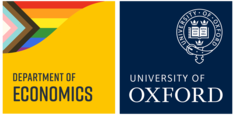I study the non-verbal language of leading pictures in online news and its influence on readers’ opinions. I develop a visual vocabulary and use a dictionary approach to analyze around 300,000 photos published in US news in 2020. I document that the visual language of US media is politically partisan and significantly polarised, to an extent comparable to the text partisanship in the same news pieces. I then demonstrate experimentally that the news’ partisan visual language is not merely distinctive of outlets’ ideological positions, but also promotes them among readers. In a survey experiment, identical articles with images of opposing partisanships induce different opinions, tilted towards the pictures’ ideological poles. Moreover, as readers react more to images aligned with the ideology of their political affiliation group, the news’ visual bias causes polarization to increase. Finally, I find that media can effectively influence readers by pairing neutral text with partisan images. This highlights the need to incorporate image analysis into news assessments and fact-checking, activities that are currently mainly focusing on text.
non-verbal language
,polarization
,news photography
,media bias


